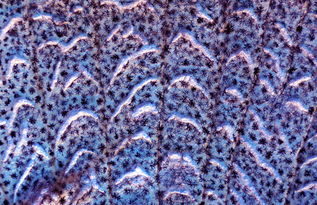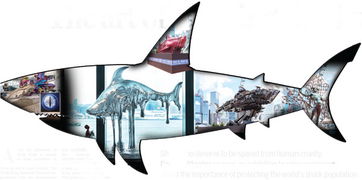Content:
In the serene world of freshwater ponds and bustling oceans, the art of fishing is a timeless pursuit that has been passed down through generations. While it may seem like a simple activity, mastering the技巧 of fishing requires patience, practice, and a keen understanding of the underwater world. This article delves into the fascinating journey of how little fish learn to fish, offering insights and tips for both beginners and seasoned anglers.
Understanding the Basics
Before diving into the intricacies of fishing, it's essential to understand the basics. Little fish, like their human counterparts, start by observing and mimicking the behaviors of more experienced fish. Here are some fundamental aspects that young fish learn to master:
Identifying Prey: Young fish begin by watching their elders as they hunt for food. They learn to recognize the movements and shapes of potential prey, such as insects, smaller fish, or plankton.
Locating Food Sources: As they grow, young fish start to explore different areas of their habitat to find the best food sources. They learn to navigate currents, vegetation, and structures that can provide cover and food.
Using Their Senses: The ability to use all five senses is crucial for fishing. Young fish learn to rely on their sense of smell to detect food, their sense of sight to spot prey, and their sense of touch to feel vibrations in the water.
Learning to Hunt: Through trial and error, young fish learn to hunt effectively. They practice striking at prey, learning the right timing and force to catch their meal.
The Learning Process
The learning process for little fish is a gradual one, involving several stages:
Observation: Initially, young fish observe the behaviors of more experienced fish, learning from their successes and failures.
Practice: As they grow, they start to practice their hunting skills, often making mistakes and learning from them.
Experience: With time, experience becomes the best teacher. Young fish learn to adapt their techniques based on what works and what doesn't.
Mentorship: In many fish species, there is a form of mentorship where older fish guide younger ones. This can significantly accelerate the learning process.

Techniques for Young Fish
Young fish employ various techniques to catch their prey, some of which include:
Ambush: Waiting in hiding and striking suddenly when prey comes within range.
Chase: Pursuing prey over a distance until it can be caught.
Surprise Attack: Using a quick burst of speed to catch prey off guard.
Teamwork: Some fish species hunt in groups, coordinating their efforts to catch larger prey.
Tips for Learning to Fish
For humans looking to learn the art of fishing, here are some tips based on the learning process of little fish:
Start with Simple Techniques: Begin by learning basic fishing techniques and gradually progress to more complex ones.
Observe and Learn: Spend time watching experienced anglers and learn from their methods.
Practice Regularly: Like young fish, practice your fishing skills regularly to improve your technique.
Be Patient: Fishing requires patience, as it often takes time to catch a fish. Learn to enjoy the process and not just the outcome.
Understand the Habitat: Familiarize yourself with the water body you're fishing in, including its structure, vegetation, and currents.
Use the Right Equipment: Choose the right fishing rod, reel, line, and bait for the species you're targeting.
Be Mindful of the Environment: Practice ethical fishing, respecting the habitat and the fish you catch.
Seek Mentorship: Join a fishing club or find a mentor who can guide you through the learning process.
Stay Informed: Keep up-to-date with the latest fishing techniques and technologies.
Enjoy the Experience: Remember that fishing is not just about catching fish; it's about the experience and the connection with nature.
In conclusion, the journey of how little fish learn to fish is a testament to the adaptability and resilience of these aquatic creatures. By observing, practicing, and learning from their environment, young fish master the art of fishing. For humans, this journey can be equally rewarding, offering a chance to connect with nature, improve one's skills, and enjoy the tranquility of the water. Whether you're a beginner or a seasoned angler, the tips and insights provided here can help you on your path to becoming a master fisher.












